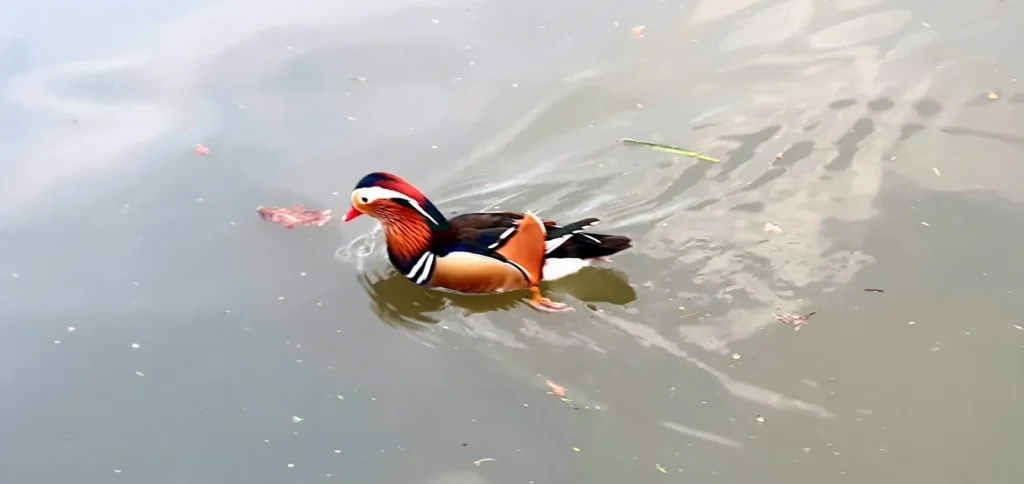The trip I propose to present to you took place in March 2023. It was a sunny day, and the blooming flowers and the windy air flowed, making you see the renewal of the year unfolding before your eyes and smell the wonderful perfume. As conventionally the week starts on Monday, one can say that the year (re)starts in spring. The area I will describe here is Hampstead Heath, located in the north of London.
Hampstead is a suburb, a village, and ‘heath’ denotes uncultivated open land due to the unfavorable (acidic) soil on which shrubs grow. That was in the past, but now a large park appears, and a suburb (a village), both with a special charm. I got there by taking an Uber from South Woodford. The journey to Hampstead, although long, was relaxing, as we (my dear friends from London and I ;)) engaged in storytelling with the friendly driver. Here’s what the beautiful suburb looked like on that sunny spring day:



Here is a stack of links: What is Heathland, Moorland Wiki, Heath Wiki, Hampstead Heath Wiki, Hampstead Garden Suburb.
After seeing the village, we headed to the park. From this park, you can admire the panorama of the City of London, you can see old and new buildings in the distance, and it is a beautiful view of the London metropolis.

We visited the hill gardens (Hill garden) and the pergolas (Pergola). A pergola is a light construction in a park or garden, consisting of a network of wooden beams supported by rows of columns, poles on which decorative hanging plants are stretched. There were many people in the Pergola, and bride and groom couples were being photographed. Amateurs and professionals who take all kinds of photos taking advantage of the floral beauty of the pergola.





The history of the Pergola went like this: on the site of the park in 1900, there was a very large house called The Hill. The owner of this house, Lord Lever, wanted to have a garden with exotic plants and so began its construction. It seems that the soil in those gardens comes from the excavations following the construction of the underground lines in North London. But the Pergola was not finished, and after the Lord’s death the construction was left in disrepair. Later, the English state restores it, but even now it is not completely renovated. You can find the detailed history of the origin of the Pergola here: https://en.wikipedia.org/wiki/Inverforth_House



I got there in the early spring, right after the end of winter.





And what is special about this season is that the magnolias were all in bloom. Lots of magnolia trees. With a special color. Magnolias first bloom, and after three weeks they lose their flowers and start to grow leaves. Because of this Magnolias are only beautiful in early spring.

There is also a mini zoo in the park.

I noticed that there are a lot of yellow daffodils.




Lakes with ducklings. I also saw many mandarin ducks whose plumage is impressively beautiful.

Lots of adorable and friendly squirrels who dare to approach you and eat from your palm.


I also stopped by Golders Hill Park Cafe from where I headed towards Stumpery, a protected natural area.


On the way I admired the magnolias in the Walled Garden.

There I listened to the story of a lady who loves animals and I was deeply impressed by her story which sounds something like this: She took care of a fox who after growing up left her home to mate. And this lady after a few months, passing through a winter, began to have restless thoughts, worrying that something bad might have happened to the fox. Unless she was caught by someone or mistreated or something bad happened to her? He was walking with these thoughts along a path in the Hampstead woods. And miraculously, the fox appeared, got in her way as if to calm her down so she wouldn’t worry anymore. Beautiful story.

Moreover, I was also surprised how well he got along with a small family of squirrels in the World Garden to whom he brought hazelnuts. He had collected many beautiful and funny photos of animals on Facebook, and created small humorous stories. He had started editing a little book with these beautiful photos with the expressive faces of squirrels, foxes, birds, and some funny scenes with them and even with insects, for example with dragonflies.
Also from her I learned the history of the red squirrel. Which is said to be in the process of disappearing as a race, on the grounds that the gray race, which is more resistant and transmits many diseases to the red race, was brought from America. It seems that in fact this is just a story made up to exterminate the squirrels for eating the bark of the conifers in the plantations. That is, on the grounds that it would destroy the local squirrel race (the red race), people were encouraged to kill the gray squirrels. He told about the so-called squirrel clubs. That is, the members of these clubs aimed to catch and destroy as many squirrels as possible, for which they received cash prizes. For more details search for “Red Squirrels United”. https://www.theguardian.com/environment/2017/jun/02/kill-them-the-volunteer-army-plotting-to-wipe-out-britains-grey-squirrels

I caught a very beautiful sunset. With a soothing golden sun.

We returned home on the London Double-decker.

